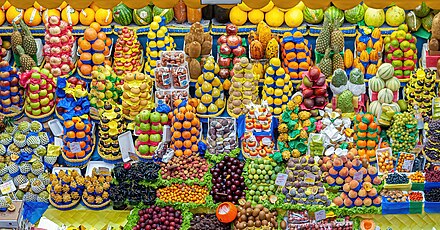 Various fruits arranged at a stall in the Municipal Market of São Paulo.
Various fruits arranged at a stall in the Municipal Market of São Paulo. 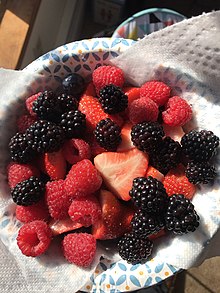 Fresh fruit mix of blackberries, strawberries, and raspberries
Fresh fruit mix of blackberries, strawberries, and raspberries In botany, a fruit is the seed-bearing structure in flowering plants that is formed from the ovary after flowering (see Fruit anatomy).
Fruits are the means by which flowering plants (also known as angiosperms) disseminate their seeds. Edible fruits in particular have long propagated using the movements of humans and other animals in a symbiotic relationship that is the means for seed dispersal for the one group and nutrition for the other; in fact, humans and many other animals have become dependent on fruits as a source of food.[1] Consequently, fruits account for a substantial fraction of the world's agricultural output, and some (such as the apple and the pomegranate) have acquired extensive cultural and symbolic meanings.
In common language usage, fruit normally means the seed-associated fleshy structures (or produce) of plants that typically are sweet or sour and edible in the raw state, such as apples, bananas, grapes, lemons, oranges, and strawberries. In botanical usage, the term fruit also includes many structures that are not commonly called 'fruits' in everyday language, such as nuts, bean pods, corn kernels, tomatoes, and wheat grains.[2][3]
Botanical vs. culinary
 An arrangement of fruits commonly thought of as culinary vegetables, including corn (maize), tomatoes, and various squash
An arrangement of fruits commonly thought of as culinary vegetables, including corn (maize), tomatoes, and various squash Many common language terms used for fruit and seeds differ from botanical classifications. For example, in botany, a fruit is a ripened ovary or carpel that contains seeds, e.g., an orange, pomegranate, tomato or a pumpkin. A nut is a type of fruit (and not a seed), and a seed is a ripened ovule.[4]
In culinary language, a fruit is the sweet- or not sweet- (even sour-) tasting produce of a specific plant (e.g., a peach, pear or lemon); nuts are hard, oily, non-sweet plant produce in shells (hazelnut, acorn). Vegetables, so called, typically are savory or non-sweet produce (zucchini, lettuce, broccoli, and tomato); but some may be sweet-tasting (sweet potato).[5]
Examples of botanically classified fruit that are typically called vegetables include: cucumber, pumpkin, and squash (all are cucurbits); beans, peanuts, and peas (all legumes); corn, eggplant, bell pepper (or sweet pepper), and tomato. The spices chili pepper and allspice are fruits, botanically speaking.[4] In contrast, rhubarb is often called a fruit when used in making pies, but the edible produce of rhubarb is actually the leaf stalk or petiole of the plant.[6] Edible gymnosperm seeds are often given fruit names, e.g., ginkgo nuts and pine nuts.
Botanically, a cereal grain, such as corn, rice, or wheat is a kind of fruit (termed a caryopsis). However, the fruit wall is thin and fused to the seed coat, so almost all the edible grain-fruit is actually a seed.[7]
Structure
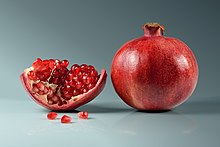 Pomegranate fruit – whole and piece with arils
Pomegranate fruit – whole and piece with arils The outer layer, often edible, of most fruits is called the pericarp. Typically formed from the ovary, it surrounds the seeds; in some species, however, other structural tissues contribute to or form the edible portion. The pericarp may be described in three layers from outer to inner, i.e., the epicarp, mesocarp and endocarp.
Fruit that bears a prominent pointed terminal projection is said to be beaked.[8]
Development
A fruit results from the fertilizing and maturing of one or more flowers. The gynoecium, which contains the stigma-style-ovary system, is centered in the flower-head, and it forms all or part of the fruit.[9] Inside the ovary(ies) are one or more ovules. Here begins a complex sequence called double fertilization: a female gametophyte produces an egg cell for the purpose of fertilization.[10] (A female gametophyte is called a megagametophyte, and also called the embryo sac.) After double fertilization, the ovules will become seeds.
Ovules are fertilized in a process that starts with pollination, which is the movement of pollen from the stamens to the stigma-style-ovary system within the flower-head. After pollination, a pollen tube grows from the (deposited) pollen through the stigma down the style into the ovary to the ovule. Two sperm are transferred from the pollen to a megagametophyte. Within the megagametophyte, one sperm unites with the egg, forming a zygote, while the second sperm enters the central cell forming the endosperm mother cell, which completes the double fertilization process.[11][12] Later, the zygote will give rise to the embryo of the seed, and the endosperm mother cell will give rise to endosperm, a nutritive tissue used by the embryo.
As the ovules develop into seeds, the ovary begins to ripen and the ovary wall, the pericarp, may become fleshy (as in berries or drupes), or it may form a hard outer covering (as in nuts). In some multi-seeded fruits, the extent to which a fleshy structure develops is proportional to the number of fertilized ovules.[13] The pericarp typically is differentiated into two or three distinct layers; these are called the exocarp (outer layer, also called epicarp), mesocarp (middle layer), and endocarp (inner layer).
In some fruits, the sepals, petals, stamens and/or the style of the flower fall away as the fleshy fruit ripens. However, for simple fruits derived from an inferior ovary – i.e., one that lies below the attachment of other floral parts – there are parts (including petals, sepals, and stamens) that fuse with the ovary and ripen with it. For such a case, when floral parts other than the ovary form a significant part of the fruit that develops, it is called an accessory fruit. Examples of accessory fruits include apple, rose hip, strawberry, and pineapple.
Because several parts of the flower besides the ovary may contribute to the structure of a fruit, it is important to study flower structure to understand how a particular fruit forms.[3] There are three general modes of fruit development:
- Apocarpous fruits develop from a single flower (while having one or more separate, unfused, carpels); they are the simple fruits.
- Syncarpous fruits develop from a single gynoecium (having two or more carpels fused together).
- Multiple fruits form from many flowers – i.e., an inflorescence of flowers.
- The parts of a flower, showing the stigma-style-ovary system.
- An apple is a simple, fleshy fruit. Key parts are the epicarp, or exocarp, or outer skin (not labelled); and the mesocarp and endocarp (labelled).
- Insertion point: There are three positions of insertion of the ovary at the base of a flower: I superior; II half-inferior; III inferior. The 'insertion point' is where the androecium parts (a), the petals (p), and the sepals (s) all converge and attach to the receptacle (r). (Ovary=gynoecium (g).)
You received this message because you are subscribed to the Google Groups "1top-oldtattoo-1" group.
To unsubscribe from this group and stop receiving emails from it, send an email to 1top-oldtattoo-1+unsubscribe@googlegroups.com.
To view this discussion on the web visit https://groups.google.com/d/msgid/1top-oldtattoo-1/CAGNPKmn0z6fHjvdxL-WhDQv7e_xrfY83V0Q_n0DN3J5gw-dhWQ%40mail.gmail.com.

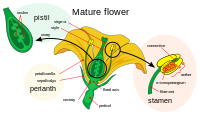

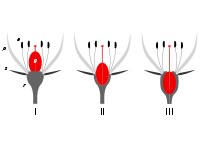
No comments:
Post a Comment